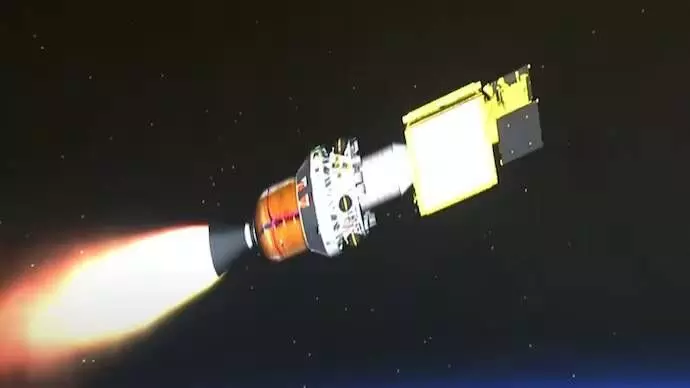PSLV-C61 Mission Fails: What Happens Next? Former ISRO Scientist Explains
ISRO’s PSLV-C61 mission fails during third-stage burn; EOS-09 lost. Failure Analysis Committee formed to investigate and prevent future issues.
image for illustrative purpose

The Indian Space Research Organisation’s (ISRO) PSLV-C61 mission suffered a setback early Sunday morning when the launch vehicle veered off course during the critical third-stage burn, resulting in the failure of the mission. The rocket, which lifted off at 5:59 a.m. IST from Sriharikota’s Satish Dhawan Space Centre, was carrying the Earth Observation Satellite EOS-09, aimed at enhancing India's all-weather earth imaging capabilities.
What Went Wrong?
The PSLV-C61 experienced an unexpected drop in velocity during the third stage, deviating from its planned trajectory. The anomaly led to mission failure, and EOS-09 was unable to reach its intended orbit.
What Happens Now?
Following any mission failure, ISRO initiates a detailed and methodical review process to determine the cause and prevent recurrence.
Formation of a Failure Analysis Committee (FAC):
A team of seasoned scientists, engineers, and mission specialists from various ISRO centers is assembled to investigate the failure.
Telemetry Data Review:
During launch, ISRO's systems collect real-time telemetry data, including velocity, altitude, engine performance, and structural integrity. This data is critical for identifying the exact moment and cause of failure.
Flight Data Analysis:
In this case, data revealed a sharp drop in velocity (from 6 km/s to 2.45 km/s), prompting a review of the third-stage performance and trajectory deviation. Analysts will compare the actual flight profile with expected parameters to identify anomalies.
Component and System Checks:
Engineers will examine logs from the propulsion system, guidance software, and hardware components such as engines and avionics. Closed-loop guidance and radar tracking data will also be used to reconstruct the event.
Simulation and Audits:
ISRO conducts rigorous simulations to replicate the failure conditions. This includes reviewing the rocket's design, manufacturing processes, and software systems for possible flaws or oversights.
Report and Recommendations:
The FAC compiles a comprehensive report outlining the root cause—whether mechanical, software-related, human error, or environmental—and recommends corrective measures such as design changes or procedural improvements.
Learning from Setbacks
ISRO has a history of learning from failures. For example, after the PSLV-C1 mission failed in 1993 due to a software error, and the GSLV-F10 (EOS-03) failed due to a tank pressurization issue, the agency significantly overhauled its testing protocols and safety measures.
Each failure feeds into ISRO’s evolving knowledge base, ultimately making future missions more robust and reliable.

